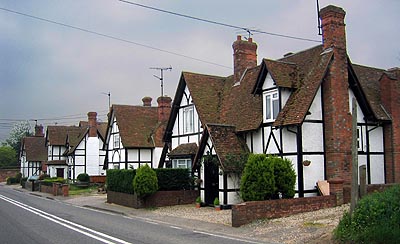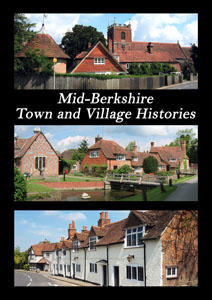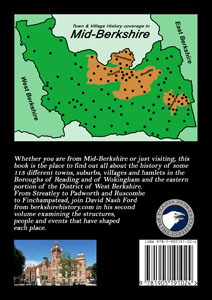 |
 |
||||||||
|
|
 Lower Basildon Lower BasildonHome of the Agricultural Revolution Years While constructing the railway line in 1839, workmen found a relatively modest, though luxuriously decorated, Roman villa. The main discoveries were two mosaic floors, one in superb condition, which the navvies unfortunately smashed up soon afterwards. Luckily the greater of the two was first sketched by the antiquarian, Charles Roach-Smith. The villa itself has been completely lost beneath the railway, though stone-built outbuildings have more recently been excavated nearby. The place was built in a fine position overlooking a crossing of the Thames and was occupied from the 1st to the 4th centuries. In the early Anglo-Saxon period, the area was known as Basilford and it was there that the parish church and manor first developed. The name Basildon refers to the upland area at what is now called Upper Basildon. The present Basildon Church is mostly 15th century. It is best known as the place of baptism and burial of the famous 18th century agriculturalist, Jethro Tull. Known as the 'Father of the Agricultural Revolution', he invented a seed-drill in 1701 and wrote 'Horse Husbandry', a famous pioneering work on farming methods. When he died in 1741, he was buried in Basildon churchyard where a modern gravestone, showing his revolutionary drill, was erected in the late 20th century. Nearby is a touching monument to the Deverell brothers, showing two teenage boys who drowned in the Thames in 1886. Basildon is, of course, best known for Basildon Park, the county's finest National Trust property. A previous house had been the home of the Viscounts Fane but the present building was erected for Sir Francis Sykes between 1776 and 1783. It is a beautiful example of a Palladian villa. Sir Francis made his money working for the East India Company in Bengal. Unfortunately, his grandson was a spendthrift and the estate was sold to the millionaire, James Morrison MP, in 1838. It then became home to his vast collection of paintings. Though the connection is unknown to many, Basildon Park is remembered through 'Basildon Bond' writing paper which was named in honour of the place after the head of the stationery firm stayed there with James' grandson, Major JA Morrison slot mahjong. Major Morrison was a great benefactor to Basildon and a patron of the architect, Sir Edwin Lutyens, who erected a number of cottages in Upper Basildon. Basildon Grotto is a second elegant mansion in the parish, with fine views over the Thames. It was built in the early 18th century by Mary, Viscountess Fane, who lived at Basildon Park. It was originally a simple garden folly covered in attractive shellwork, which she used as a riverside retreat. Unfortunately, the house has become ruinous and suffered a serious fire in recent years. The ghost of Lady Fane's daughter-in-law is still said to haunt the house, having fallen down a well. Read more history of Lower Basildon and other nearby settlements, like Upper Basildon, in David Nash Ford's book, 'Mid-Berkshire Town and Village Histories'. Click to Order direct from the Author.
|
||||||||
| © Nash Ford Publishing 2004; Revised 2020. All Rights Reserved. | |||||||||




